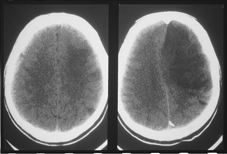Regents hear two sides of applying medical home concept
The Board of Regents recently brought in two experts to talk about how the patient-centered medical home actually works in practice in a first-ever Regents meeting debate.
The College's support for the concept of the patient-centered medical home (PCMH) is well known, but the Board of Regents recently brought in two experts to talk about how the PCMH actually works in practice.
In a first-ever Regents meeting debate, Bruce H. Hamory, FACP, and Richard J. Baron, FACP, went head-to-head over whether the PCMH is best suited to large medical groups or works just as well in small practices. Both physicians were speaking from experience.

Dr. Hamory is an executive vice president and chief medical officer emeritus with Pennsylvania's Geisinger Health System, which has redesigned 22 of its outpatient practices to be medical homes. Dr. Baron is the president of Greenhouse Internists, an outpatient practice of five general internists that is participating in a Pennsylvania PCMH demonstration project.
The transformation to medical homes is better accomplished by large practices because it is a complex, time- and labor-intensive task, contended Dr. Hamory. “This is a long and arduous path. This is not for the faint of heart,” he warned.
“Our organization put in a lot of time, a lot of money, a lot of technology,” he added. Dr. Baron agreed that the transformation is challenging. But, he argued, it's absolutely necessary for small practices to make the change, because the current system is not working for them.

“We need a new model of general internal medicine,” Dr. Baron said. “We don't have enough technology and staff. We're all doing things we should not do. We're making way more phone calls and answering way more e-mails than we ought to, because we don't have anyone else to do it.”
In addition to improving care and making physicians' work more efficient, the PCMH is also expected to reduce the overall cost of health care, the debaters noted. For Geisinger, the cost equation is simple. Since it serves as both the care provider and the insurer, Geisinger benefits from any overall reduction in health care expenditures.
For a small, outpatient practice like Greenhouse, however, there's no direct financial benefit in reducing patients' long-term medical costs. Dr. Baron's practice could afford to make the transition because of a unique financial incentive system arranged by the Pennsylvania governor's office. See the April 2009 ACP Internist for details.
Because the Geisinger clinics also operate on a fee-for-service model, the conversion to PCMH required support from the governor's program and funding from the Geisinger health plan, Dr. Hamory noted.
ACP should support the development of similar programs to reward small practices for becoming medical homes, Dr. Baron said. “None of this is going anywhere unless there is money on the table.”
The Regents had additional questions and concerns about the model: Would it elevate nurse practitioners to a more equivalent status? Would internists have more time to do the complex care that many enjoy most?
Under the PCMH model, responsibilities are allocated more effectively, according to Dr. Baron. “I think I'm spending more of my time on activities that I find rewarding and value-generating,” he said.
The debaters were also asked about the most important factors in making their PCMHs work. Local physician leadership was the key, according to Dr. Hamory.
“If I had to pick one thing, it's the comprehensive electronic health record,” said Dr. Baron. He sees the best chance for the PCMH to really happen, however, not in new technology, but the people who will use it.
“The untapped resource we have is the desire of people in primary care to really care for their patients. They have been spectacularly handicapped in that. If you give them the tools to do it, they will do it; it is what they want to do,” Dr. Baron concluded.





